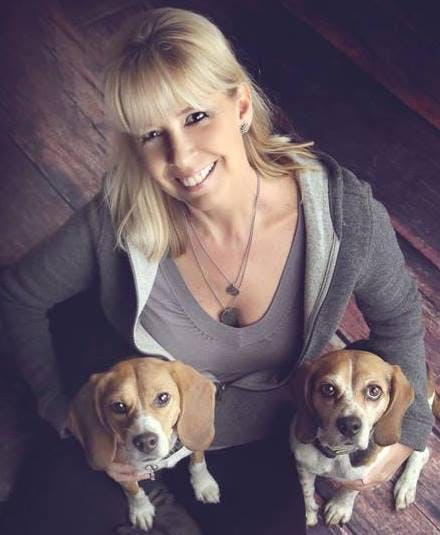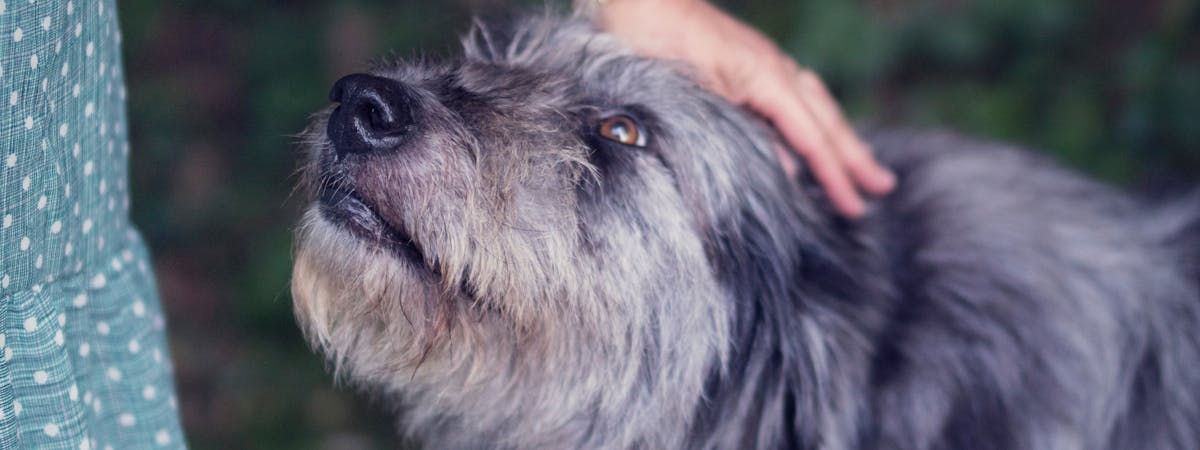When I got the call that our foster dog Poppy, on a trial overnight stay with a potential adopter, had twisted free of her harness and bolted into a wilderness park, I did what anyone would do — I panicked. I spent the next sixteen hours in a frantic search for this nineteen-pound beagle mix who’d only been rescued from the Chinese dog meat trade and brought to California six weeks previously.
Luckily, someone then put me in touch with two Pet Recovery Specialists and I learned what one really needs to do when a dog goes missing, and, just as importantly, what not to do. Following everything they told us to do, we found Poppy five and ½ days later, healthy, happy, and ready to come home.
To spare anyone else the fear and heartache of a lost dog, I’d like to share the tips I learned from the Pet Recovery Specialists. If your dog or a dog you are watching should go missing, please follow these steps.
Trending posts
Purr-use some of the top blogs our members have been loving this month- Top male dog names for your new furry friendGot a new furry family member in your pack? Check…

- Top female dog names for your new fluffy palWelcoming a new pooch into your family? Explore…

- 120+ gray cat names your silver feline will loveRecently welcomed a fluffy gray bundle of joy into…

- What are normal pet sitting rates?Discover the average pet sitting rates for animals…

- Unique dog names to stand out from the packDare to be different with our list of the best…

- Stop. Stop what you are doing. Stop chasing your dog, stop calling its name. Stop. Know that every part of this will go against your instincts. Your instincts are wrong and are fear-based. Stop and listen to the experts. Your dog’s life may depend on it.
- Do not chase your dog. This bears repeating. DO NOT CHASE YOUR DOG. A dog being chased thinks one of two things: 1) “Human sounds scared. This must be awful. Must run faster!” or 2) “Oh, look, human is playing too. Let’s gooooooo!” You will not outrun a frightened dog, and you may well chase it into traffic.
- Do not call out your dog's name. Your dog will hear the panic in your voice and think “if he/she is scared, I’m scared. I better hide!”
- Call in a Pet Recovery Specialist. Someone like Babs Fry (619) 249-2221 or Mike Noon (714)724-6712. They both work for free and can guide you by phone. Every circumstance is different, and they can tailor their advice to your dog’s situation. Pet Recovery Specialists can be found online and they don’t need to live near you to help.
- Give your dog a way to come home. Leave a door open — especially at night.
- Do not run around spreading your scent throughout the neighborhood where the dog is lost. You want to establish one place where your scent is that the dog can find its way back to — that may be at home or it may be where your dog was lost (see #11 below). If your scent is all over several square miles, your dog may chase that scent and wander further off.
- Put out some dirty laundry that smells like the dog’s human companion — socks, underwear, a T-shirt. (Not a whole laundry basket or bedsheets; dogs have a very strong sense of smell, and you don’t want to startle them.) If you can hang a piece of dirty laundry in a tree or bush in front of the dog’s home, do so. The wind will carry the scent farther.
- Get a PR campaign going — you want thousands of eyes on thousands of flyers. Produce as many flyers as you can. Ask volunteers to hang them in the area the dog was last seen and for miles out from that spot. Do NOT offer a reward. Rewards bring out bad actors who will either chase the dog into a dangerous situation or will provide bad information in the hopes it’s correct and they can reap the reward.
- Put up big, bright posters where people are most likely to see them.
- Do not have volunteers, however well meaning, out searching for your dog. You want people watching from a seated position, observing, and reporting sightings, but not chasing, not following, and not walking around. Activity will cause the dog to hide. A place with lots of humans roaming around will not be viewed as “safe” by the dog. Give the dog a chance to find its way to a safe spot.
- Eventually, if the dog doesn’t find its way back to its home, or if it was lost somewhere not familiar to it, your dog will establish a pattern. It will settle down in one locale. You’ll learn where this is by the sightings reported to you by people seeing your signs. This may take a while. Do not give up.
- Once a locale is established, go to that spot with smelly food and a piece of the dirty laundry and sit, waiting. Your only job is to give the dog a safe space in which to expose itself. Do not call to the dog, do not chase the dog. Do not make movement toward the dog if you see the dog. Just wait. Let the dog find you. They will see you and smell you, long before you see them.
- Eventually, you will find where the dog is and be able to set a humane trap.
- Do not give up. It’s often a marathon, not a sprint, but the dog can and will be found.
Teresa J. Rhyne is the #1 New York Times bestselling author of “The Dog Lived (and So Will I).” Her newest book “Poppy In The Wild: A lost dog, 1500 acres of wilderness, and the dogged determination that brought her home” was released in October, 2020.

